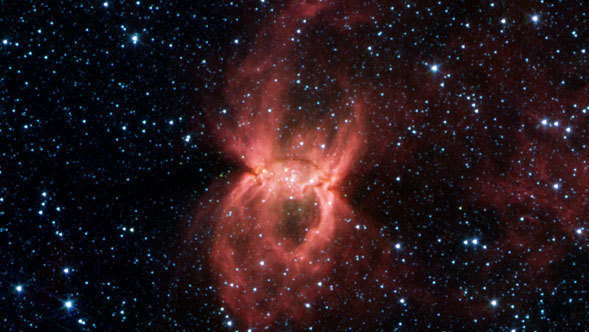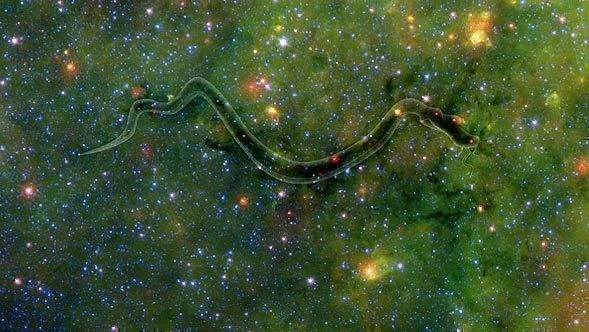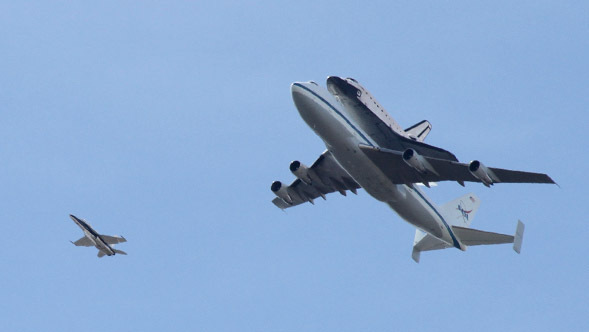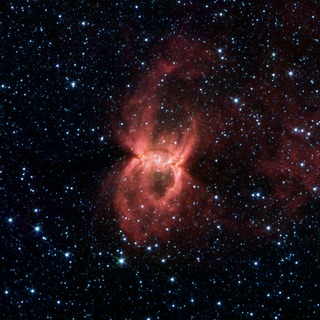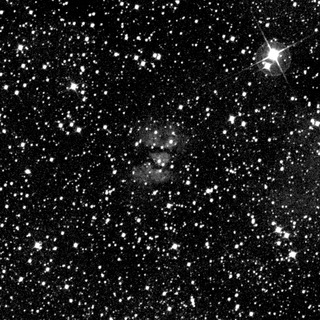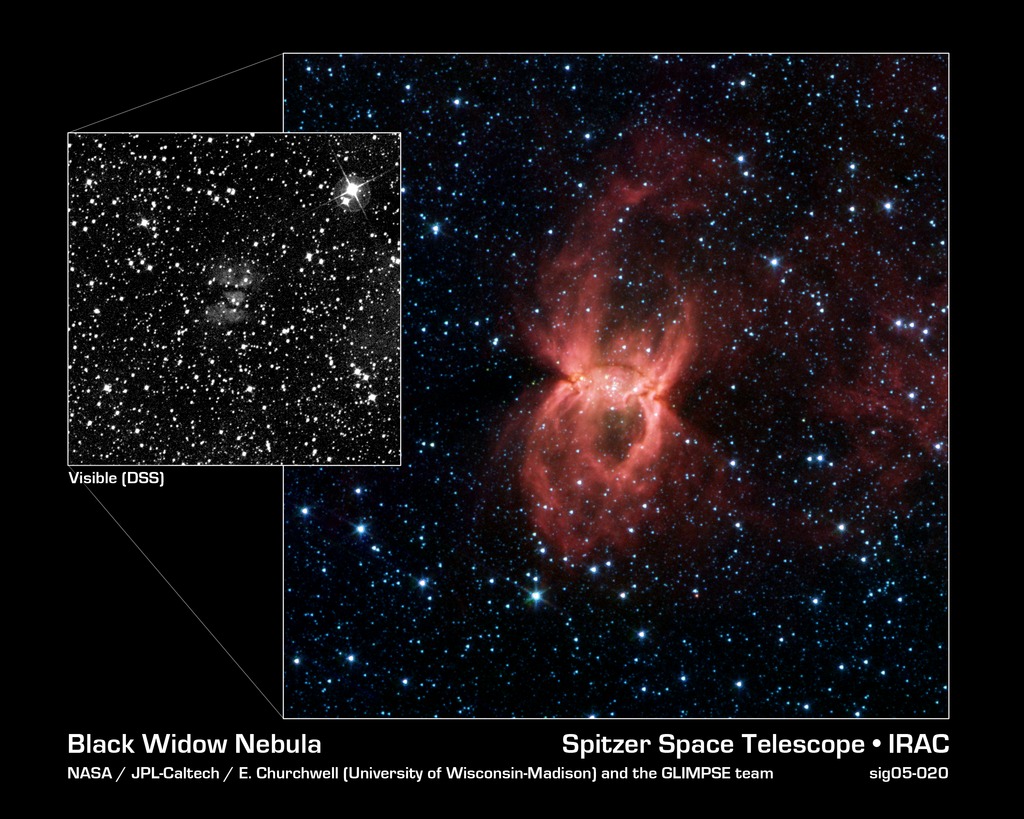
Credit: NASA/JPL-Caltech/E. Churchwell (University of Wisconsin-Madison) and the GLIMPSE Team
Observation • October 28th, 2005 • sig05-020
sig05-020
In the constellation Circinus, where previous visible-light observations by the Digital Sky Survey (left) saw only a faint hourglass-shaped patch of obscuring dust and gas, NASA's Spitzer Space Telescope's dust-piercing eyes see a big "Black Widow Nebula" teeming with clusters of massive young stars (right).
In the Spitzer image, the two opposing bubbles are being formed in opposite directions by the powerful outflows from massive groups of forming stars. The baby stars can be seen as specks of yellow where the two bubbles overlap.
When individual stars form from molecular clouds of gas and dust they produce intense radiation and very strong particle winds. Both the radiation and the stellar winds blow the dust outward from the star creating a cavity or, bubble.
In the case of the Black Widow Nebula, astronomers suspect that a large cloud of gas and dust condensed to create multiple clusters of massive star formation. The combined winds from these groups of large stars probably blew out bubbles into the direction of least resistance, forming a double bubble.
The infrared image was captured by the Galactic Legacy Infrared Mid-Plane Survey Extraordinaire (GLIMPSE) Legacy project. The Spitzer picture is a four-channel color composite, showing emission from wavelengths of 3.6 microns (blue), 4.5 microns (green), 5.8 microns (orange) and 8.0 microns (red).
About the Object
- Name
- Black Widow Nebula
- Type
- Nebula > Type > Star Formation
- Distance
- 10,000 Light Years
Color Mapping
| Band | Wavelength | Telescope |
| Infrared | 3.6 µm | Spitzer IRAC |
| Infrared | 4.5 µm | Spitzer IRAC |
| Infrared | 5.8 µm | Spitzer IRAC |
| Infrared | 8.0 µm | Spitzer IRAC |
Astrometrics
- Position (J2000)
- RA =15h 3m 33.4s
- Dec = -57° 40' 3.6"
- Field of View
- 0.0 x 0.0 arcminutes
- Orientation
- North is 209.1° left of vertical
